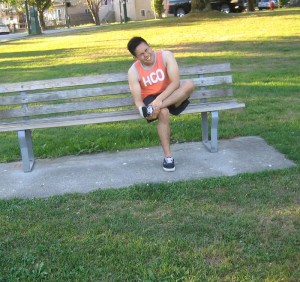Anybody can experience pain and fatigue in the legs and usually common when engaging in extensive activities, standing for long periods of time, doing physical exercise and walking long distances. Normally, this condition can be relieved after taking some time to rest. If there is fatigue and pain in the legs for a long period while walking or even at rest, it can be a symptom of some underlying conditions.
Fatigue in the legs is a symptom with several causes and it is not a disease. Other symptoms that can occur include insomnia, generalized body aches, headache and depression. Take note that the condition improves when depression is properly managed.
Causes of fatigue in the legs
- Leg fatigue can be caused by over exertion which is a common cause of pain and fatigue in the legs such as an overstrained and overly stretched calf muscles and the thigh muscles among athletes.
- Engaging in intense exercises for long periods of time especially when the individual did not warm up properly.
- Circulatory disturbances in the lower leg such as peripheral artery disease which is caused by atherosclerotic changes in the arteries found in the leg. Pain can be felt in the calf muscles when climbing stairs or walking and this condition is common among elderly people and those who have a history of smoking for years. It can also happen among diabetics and those who have high cholesterol levels.

Management of fatigue in the legs
- Encourage the individual to take a hot water bath or immerse the affected legs in warm water to provide relief to the symptoms. Taking a bath using hot water promotes the proper circulation of blood, relieves pain and fatigue.
- Massage the leg using olive or coconut oil to promote proper circulation of blood in the leg as well as relaxing the muscles that are strained.
- When lying in bed, elevate the legs by placing two pillows under the affected leg.
- Apply a cold compress or ice pack over the tensed muscles since it helps in relaxing the muscles. Apply a cold pack or heat pad over the affected area for at least 10-15 minutes since both can help minimize the inflammation.
- Eat nutritious foods in order to lessen the fatigue on the legs. A deficiency in nutrition can cause the legs to weaken.
- Eat foods that are rich in potassium which is required for the leg muscles. Banana is rich in potassium content and the individual should eat at least 2-3 bananas every day to help strengthen the muscles of the legs and prevent cramps.
- Eat foods that are packed with calcium and Vitamin E content.
- Minimize the intake of alcohol and avoid cigarette and tobacco.
- Perform light exercises or physical activity on a daily basis since it promotes proper circulation of blood and minimizes inflammation.
